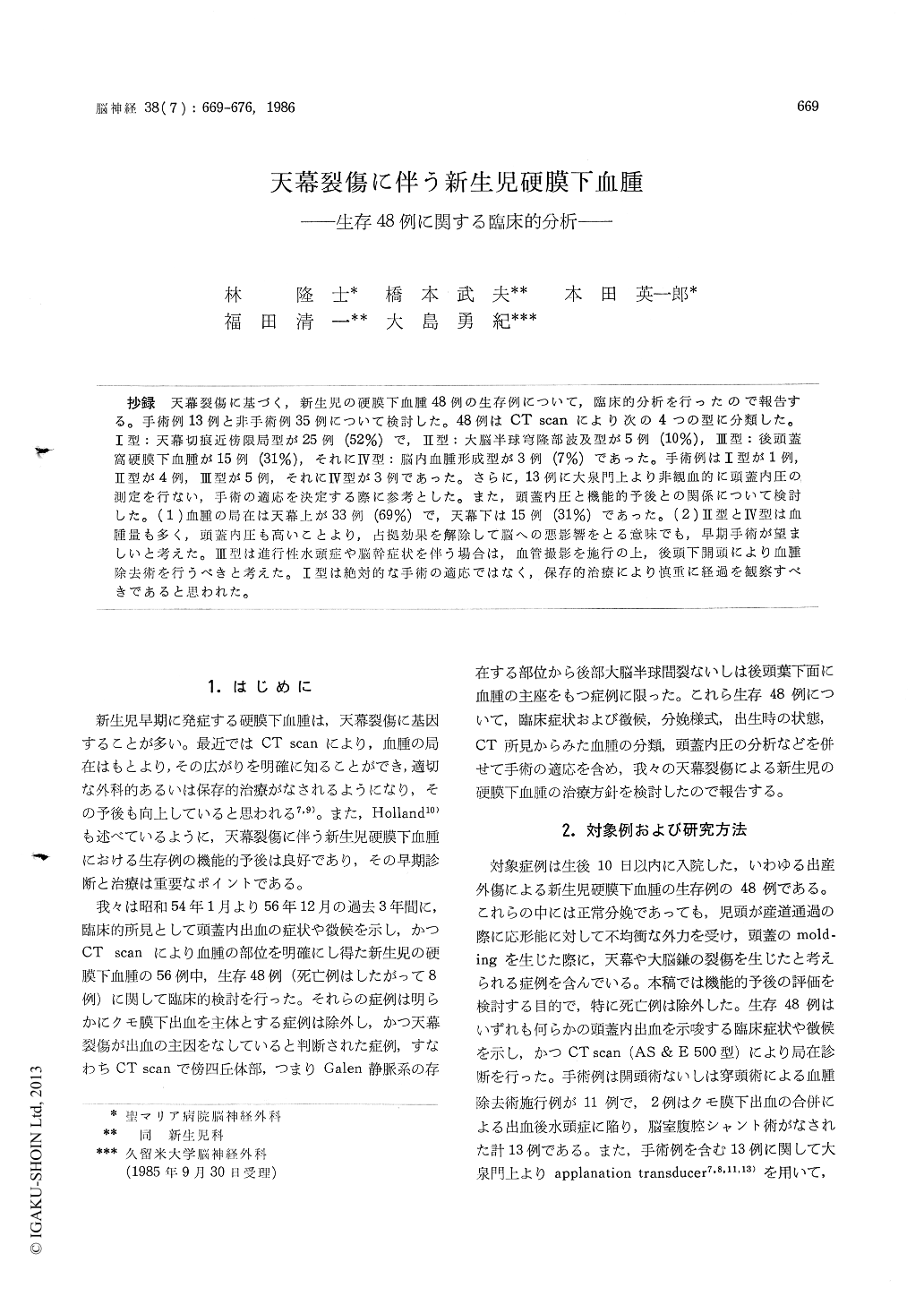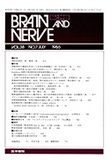Japanese
English
- 有料閲覧
- Abstract 文献概要
- 1ページ目 Look Inside
抄録 天幕裂傷に基づく,新生児の硬膜下血腫48例の生存例について,臨床的分析を行ったので報告する。手術例13例と非手術例35例について検討した。48例はCT scanにより次の4つの型に分類した。1型:天幕切痕近傍限局型が25例(52%)で,II型:大脳半球穹隆部波及型が5例(10%),III型:後頭蓋窩硬膜下血腫が15例(31%),それにIV型:脳内血腫形成型が3例(7%)であった。手術例はI型が1例,II型が4例,III型が5例,それにIV型が3例であった。さらに,13例に大泉門上より非観血的に頭蓋内圧の測定を行ない,手術の適応を決定する際に参考とした。また,頭蓋内圧と機能的予後との関係について検討した。(1)血腫の局在は天幕上が33例(69%)で,天幕下は15例(31%)であった。(2) II型とIV型は血腫量も多く,頭蓋内圧も高いことより,占拠効果を解除して脳への悪影響をとる意味でも,早期手術が望ましいと考えた。III型は進行性水頭症や脳幹症状を伴う場合は,血管撮影を施行の上,後頭下開頭により血腫除去術を行うべきと考えた。I型は絶対的な手術の適応ではなく,保存的治療により慎重に経過を観察すべきであると思われた。
In order to evaluate the treatments of subdural hematoma in neonates and to observe their pro-gnosis, we carried out clinical analyses on 48 survived cases in the past three years from Jan. 1979 to Dec. 1981.
Based on CT observations, hematomas were grouped into four types according to their locations as follows: Type I, localized around the posterior inter-hemispheric fissure in 25 cases (52%); Type II, ex-tending from the posterior interhemispheric fis-sure to the hemispheric convexity in five cases (10%); type III, extending from incisura to the posterior fossa in 15 cases (31%); and type N, having subdural hematoma accompanied by intra-cerebral hemorrhage in three cases (7%).
Intracranial pressure was measured via the anterior fontanelle in 13 cases. Ten patients who had extensive hemorrhage were found to exceed above 200mmH2O in the pressure.
Ages of the patients studied were 0 to 7 days old. There were 36 mature infants (75%) and 12 cases immature (25%), The maternal history of delivery was primiparous in 27 cases (56%). The fetal presentations were 38 cephalic (79%) and 10 suction deliveries (21%). The fundus oculi was examined on 32 patients. Retinal hemorrhage was noted in 12 cases.
Operations were performed on 13 patients in total; one case in type I, four cases in type II, five cases in type III and three cases in type IV. Functional prognoses were found to be as follows; Type I; normal, 15 cases, abnormal, four and un-determined, six: type II; normal, four and abnor-mal, one: type III; normal, 13, abnormal, one, and undetermined, one: and type IV; normal, two and abnormal, one case.

Copyright © 1986, Igaku-Shoin Ltd. All rights reserved.


